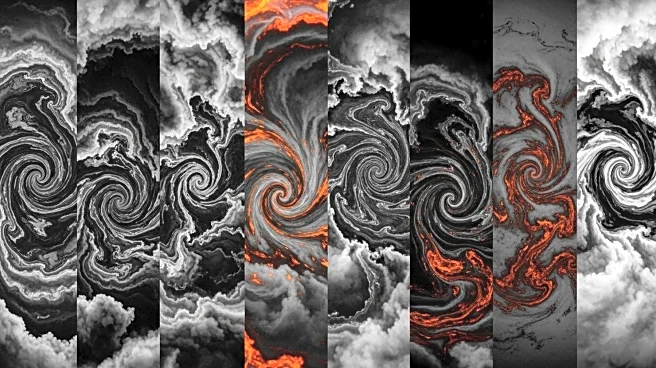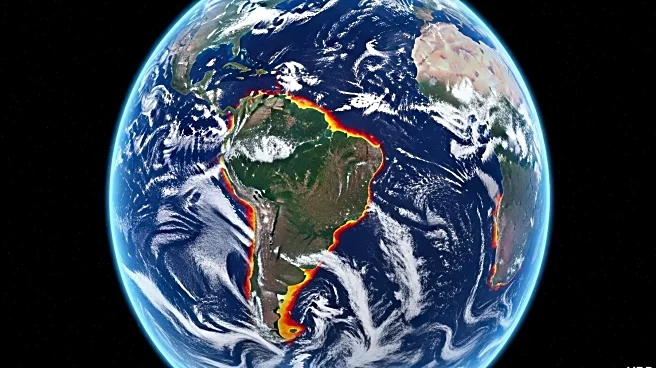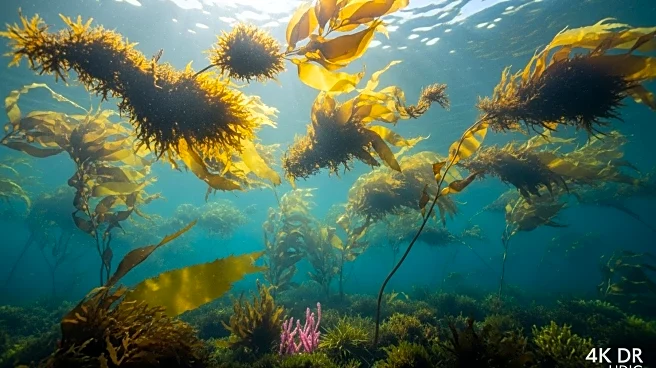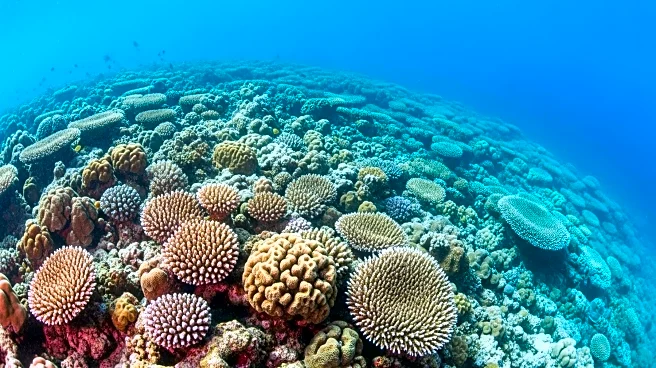What's Happening?
Satellites have recorded the largest ocean swells ever seen from space, demonstrating how massive waves can act as storm 'messengers,' carrying a storm's power across entire oceans. The Surface Water and
Ocean Topography (SWOT) mission, along with other Earth-observing satellites, tracked waves generated by powerful storms. These waves, driven by wind, create swells that carry destructive energy to distant shores, even if the storm itself does not make landfall. A particular storm, Storm Eddie, formed over the North Pacific in December 2024, served as a natural laboratory for the study. During its peak, satellites observed open-ocean waves reaching nearly 65 feet, the highest ever measured from space. These swells traveled over 15,000 miles, crossing the Drake Passage and entering the tropical Atlantic, causing erosion and flooding on distant coasts.
Why It's Important?
The study of ocean waves from space is crucial for understanding how storms can impact coastal regions far from their origin. By tracking these waves, scientists can better predict and mitigate the effects of coastal erosion and flooding, which are significant concerns for communities worldwide. The insights gained from this research challenge long-held assumptions about wave power distribution, emphasizing the importance of both long swells and shorter, high-energy storm waves. This knowledge will help refine global wave models, improving the ability to protect coastal communities from related hazards.
What's Next?
The findings from the SWOT mission and other satellite observations will likely lead to advancements in global wave modeling, enhancing the ability to predict and respond to coastal hazards. Researchers may continue to study the behavior of storm waves to further understand their impact on distant shores. Coastal communities and policymakers could use this information to develop better strategies for managing erosion and flooding risks.
Beyond the Headlines
The ability to track ocean waves from space highlights the growing importance of satellite technology in environmental monitoring. This capability not only aids in understanding storm impacts but also contributes to broader climate change research, as ocean dynamics play a significant role in global climate systems.












